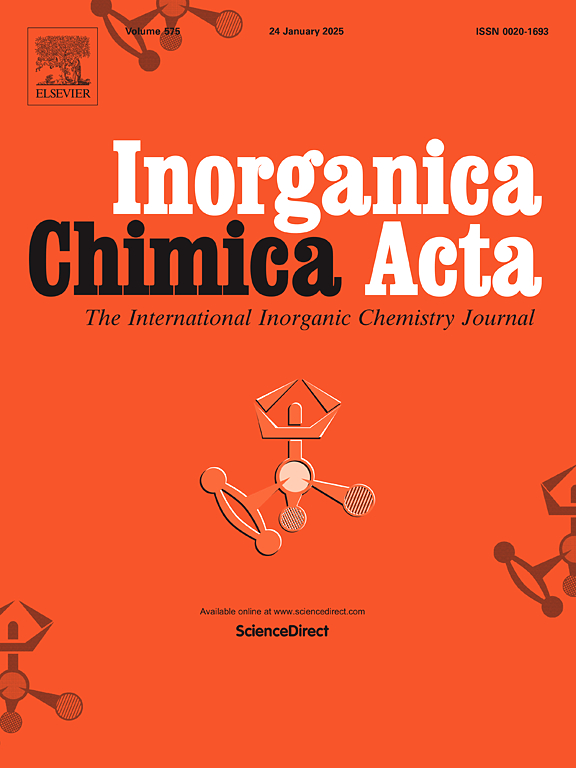Preparation and properties of a series of discrete zinc-rare earth heterometallic complexes based on 2,4-dichlorobenzoate and 2,2′-bipyridine
IF 2.7
3区 化学
Q2 CHEMISTRY, INORGANIC & NUCLEAR
引用次数: 0
Abstract
By using 2,4-dichlorobenzoic acid (2,4-HDCB) and 2,2′-bipyridine (2,2′-bpy) as mixed ligands, a series of Zn(II)-Ln(III) heterometallic complexes were successfully prepared by solvothermal method, namely [Ln2Zn2(2,4-DCB)10(2,2′-bpy)2] [Ln = Nd (1), Sm (2), Eu (3), Gd (4), Tb (5), Dy (6), Er (7) and Yb (8)]. Complexes 1–8 were characterized by single crystal X-ray diffraction (SCXRD), powder X-ray diffraction (PXRD), elemental analysis (EA), Fourier transform infrared (FT-IR) spectroscopy as well as thermogravimetric analysis (TGA) and differential thermoanalysis (DTA). These eight complexes are isomorphic. They possess discrete linear tetranuclear cluster structures formed by the 2,4-DCB anions bridging the Zn(II) and Ln(III) ions. The adjacent tetranuclear clusters can be connected through the π–π interactions into a two-dimensional (2D) supramolecular layer. The photoluminescent properties of 2, 3, 5 and 6 as well as the magnetic properties of 1 and 4–8 were investigated in detail. The characteristic luminescences of Ln(III) for 2, 3, 5 and 6 as well as the ferromagnetic couplings between the Ln(III) ions for 4–7 were observed. Complex 6 exhibits a slow magnetic relaxation behavior.

求助全文
约1分钟内获得全文
求助全文
来源期刊

Inorganica Chimica Acta
化学-无机化学与核化学
CiteScore
6.00
自引率
3.60%
发文量
440
审稿时长
35 days
期刊介绍:
Inorganica Chimica Acta is an established international forum for all aspects of advanced Inorganic Chemistry. Original papers of high scientific level and interest are published in the form of Articles and Reviews.
Topics covered include:
• chemistry of the main group elements and the d- and f-block metals, including the synthesis, characterization and reactivity of coordination, organometallic, biomimetic, supramolecular coordination compounds, including associated computational studies;
• synthesis, physico-chemical properties, applications of molecule-based nano-scaled clusters and nanomaterials designed using the principles of coordination chemistry, as well as coordination polymers (CPs), metal-organic frameworks (MOFs), metal-organic polyhedra (MPOs);
• reaction mechanisms and physico-chemical investigations computational studies of metalloenzymes and their models;
• applications of inorganic compounds, metallodrugs and molecule-based materials.
Papers composed primarily of structural reports will typically not be considered for publication.
 求助内容:
求助内容: 应助结果提醒方式:
应助结果提醒方式:


